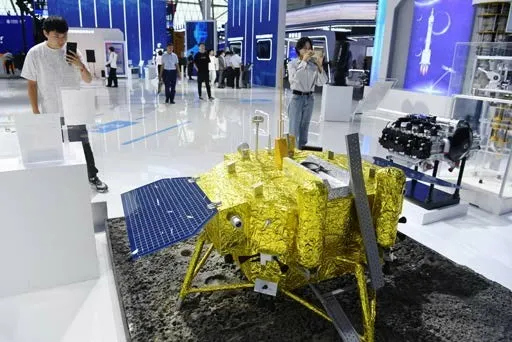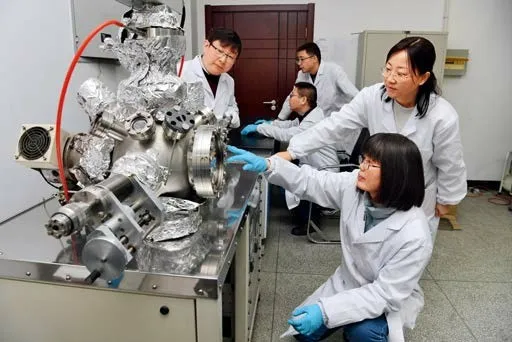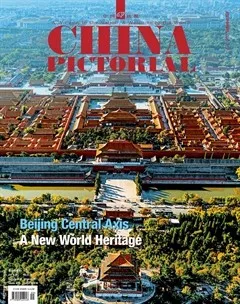ANHUI Turning Geographical Advantages into Development Strengths
Over the past decade, Anhui Province in eastern China has achieved leapfrog development. Its total economic output increased from 1.9 trillion yuan (US$267 billion) in 2013 to 4.7 trillion yuan (US$660 billion) in 2023. In China’s economic landscape, it achieved a historic leap from a province with medium-sized economic aggregate and relatively low per capita GDP to one with relatively high economic aggregate and medium per capita GDP in China. Anhui has become an emerging industrial and manufacturing powerhouse.
The reason Anhui is able to achieve leapfrog progress lies in its persistent pursuit of excellence in accordance with the strategic positioning of “three centers and one zone,” namely, a center of scientific and technological innovation with significant influence, a center of emerging industries, a new center of reform and opening up, and a zone of green transformation for economic and social development. Today, Anhui’s geographical advantages of connecting eastern and western China and linking southern and northern China are being transformed into development strengths with easy access to rivers, lakes, and various regions.
New Technologies: Foreseeing the Future
In the western suburbs of Hefei, the capital city of Anhui Province, is an island of less than three square kilometers named Science Island.
The High Magnetic Field Laboratory of the Hefei Institutes of Physical Science under the Chinese Academy of Sciences is located on the island. In August 2022, scientists working there produced a steady field of 452,200 gauss, or 45.22 tesla, beating the previous world record set nearly 23 years ago to become the highest steady magnetic field by a working magnet in the world. As the world’s fifth and China’s first lab for steady high magnetic field research, it provides a cutting-edge research platform for scientists.
 7d432971bcd7947540de7b8642065280d3a60cef8cb938f6265e526ab1c00f51
7d432971bcd7947540de7b8642065280d3a60cef8cb938f6265e526ab1c00f51Construction of the facilities on Science Island is a vivid example of Anhui’s efforts to become a science and technology powerhouse. As a key province in the national strategic science and technology layout, Anhui boasts plentiful scientific and technological innovation. It is home to high-level scientific research institutions such as the University of Science and Technology of China and the Hefei Institutes of Physical Science, as well as the first national laboratory of China.Currently, Anhui boasts a total of 13 major scientific facilities, some of which have been completed, some are under construction, and others are in the planning stage. These major scientific facilities, alongside the many scientists and experts they attract, have propelled Anhui to the forefront of the world in fields like quantum technology and fusion energy. Moreover, the province has been increasing its investment in science and technology over the decades, making great efforts to advance reforms in the science and technology system and fostering technology-based enterprises. In 2023, the province’s total fiscal investment in science and technology ranked fourth nationwide, and it boasted nearly 20,000 national-level high-tech enterprises.
Emerging Industries Form Clusters
In early May 2024, the wiring harness production line for new energy vehicles in the workshop at Luxshare Precision Industry Anhui Co., Ltd. in Linquan County, Anhui Province, was running at full capacity. At full capacity, the production line can provide wiring harnesses and other components for 200,000 new energy vehicles each year. At the same time, more than 200 kilometers away, at the Volkswagen Anhui MEB(Modular Electrification Toolkit) factory, orders for export to Europe were being produced for shipment. About 9,000 kilometers away from Wolfsburg in northern Germany, where the Volkswagen headquarters is located, Hefei has emerged as the research hub for the German automaker to develop intelligent connected electric vehicles in China and serves as an example for Anhui to promote the development of the automotive industry as its leading sector.

As a traditional manufacturing province, Anhui has actively adapted to the new round of technological revolution and industrial transformation. It has integrated the requirements of high-quality development into the process of new industrialization. The province is moving towards a smart manufacturing powerhouse. Emerging industries, represented by new energy vehicles, are releasing development momentum in Anhui. In 2023, production of new energy vehicles in Anhui reached 868,000 units, a year-onyear increase of 60.5 percent. Meanwhile, the output of integrated circuits had doubled, the output value of the flexible display industry had increased by 1.9 times, the revenue of the equipment manufacturing industry had exceeded one trillion yuan (US$140 billion), and the output value of the new materials industry had exceeded 520 billion yuan (US$73 billion). More than 2,200 enterprises in the four national strategic emerging industry clusters of integrated circuits, new display devices, artificial intelligence, and advanced structural materials had achieved a total revenue of more than 400 billion yuan (US$56 billion).
High-quality and Highefficiency Agriculture
In March, tens of thousands of acres of wheat were growing well in the green, high-yield and high-efficiency demonstration field in Cao’an Village, Quanjiao County, Anhui Province. The crops there are high-quality, high-yield, and multi-resistant varieties, and the average investment per mu (around 667 square meters) to construct high-standard farmland reaches more than 4,000 yuan (US$561). By building field roads, irrigation and drainage systems, and other facilities, the village has developed well-designed fields, networked forests, and interconnected water channels for irrigation during droughts and drainage during floods, laying a solid foundation for grain production.
Quanjiao County is a vivid example of Anhui’s efforts to accelerate construction of a huge“granary” for the Yangtze and Huaihe river basins. The province is already one of China’s major grain producers. In 2023, its total grain output exceeded 41.5 billion kilograms, achieving a bumper harvest for 20 consecutive years. Anhui is also one of the five provinces in China with a net export of grain to other parts of the country, with an annual net export of about 10 billion kilograms of high-quality grain. In 2023, Anhui set a goal of building a “100-billion-jin granary in the Yangtze and Huaihe river basins,”that is, by 2035, the province’s grain production capacity will reach more than 100 billion jin(50 billion kilograms). Focusing on arable land and seeds, Anhui has implemented major supportive projects such as high-standard farmland construction and seed industry revitalization to make even more contributions to food security.
To accelerate construction of a strong agricultural province, Anhui needs to focus on not only quantity, but also quality and efficiency. The province is an important source of agricultural products in the Yangtze River Delta region. In recent years, many of its agricultural products have become popular on the internet and in the market, promoting agricultural added value and increasing farmers’ income. In the past five years, the average annual growth rate of per capita disposable income of farmers in Anhui has stayed 0.4 percentage points higher than the national average. Anhui will continue promoting the integrated development of primary, secondary and tertiary industries, strengthening technological and equipment support for agricultural growth, developing smart agriculture and facility agriculture, and fostering production, processing, and supply bases of high-quality green agricultural products in the Yangtze River Delta as it relentlessly expands channels for farmers to increase their incomes.

